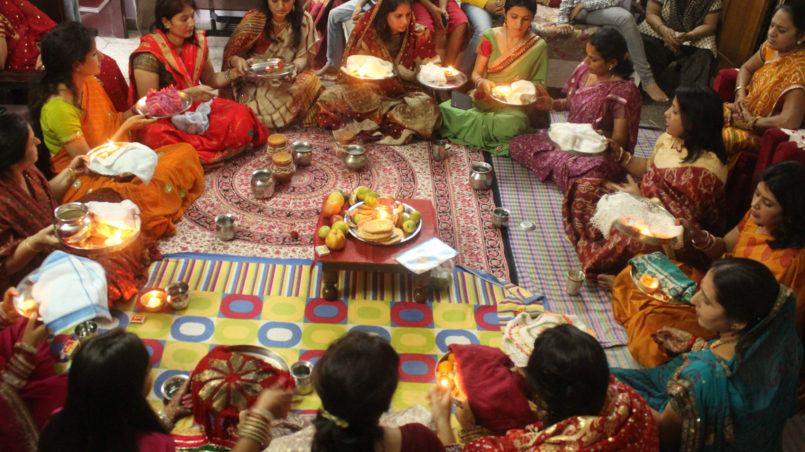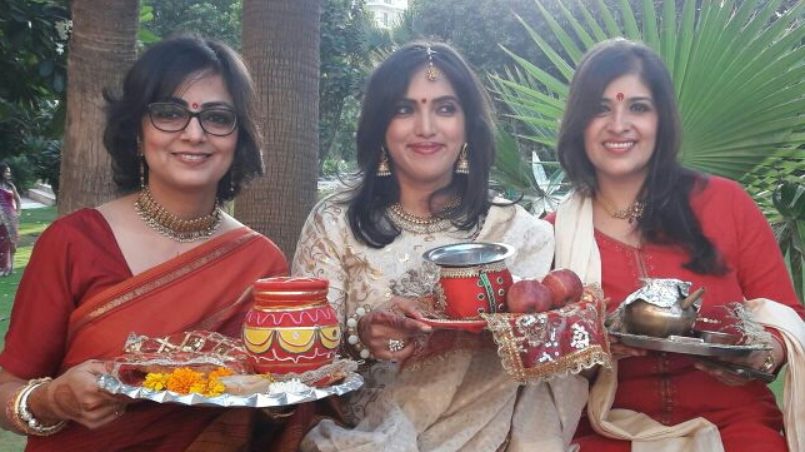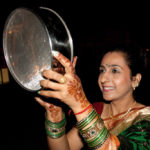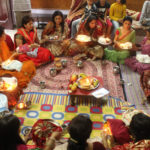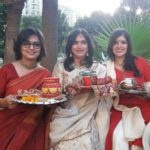Karva Chauth: A Test of Willpower
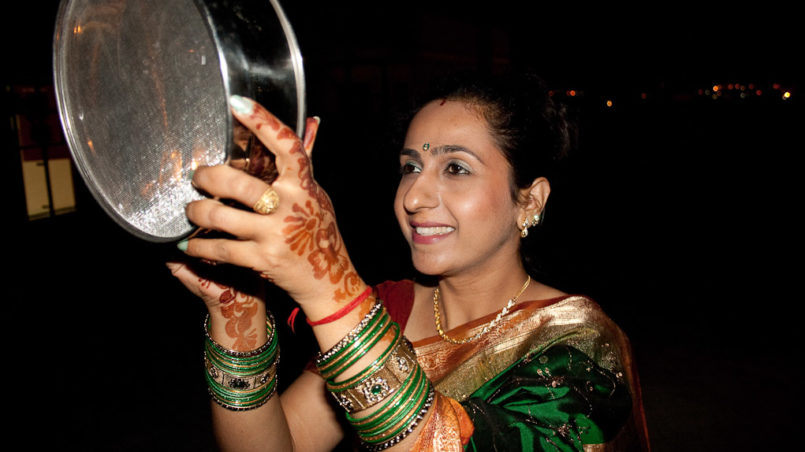
It is 11.30 pm and the streets are packed with people ‑ mostly women but also a few children. The local shops and bazaars are all still open and sell cosmetics (shringar), traditional jewellery, puja (religious) items like the Karva lamp, the puja thali (thali means plate) and some weird sieves (at this moment I really don’t understand the use of these sieves, but I am very curious to find out). I can also see a huge demand for hennas (temporary body art based on dye from the henna plant) tonight, at every street corner there is a queue of at least 5-10 women waiting for their turn. The women mostly get a mehndi (henna) on both sides of their hands and forearms, sometimes even on their feet.
Tonight is the night before the „Karva Chauth“ festival. Karva Chauth is a Hindu festival, celebrated mostly in North India. Married women or brides to be fast from sunrise until moonrise, praying for the safety and longevity of their husbands, fiancés or desired husbands. Starting from sunrise until moonrise, they are not allowed to drink or eat anything and typically their husband has to break their fast by feeding them the first bite.
When I got to know what Karva Chauth is about, it fascinates me in one way or the other ‑ I think that it is quite amazing that all these women are fasting at these tremendous temperatures, of 35° C. During Ramadan, Muslims fast for one month, before the break of the dawn until sunset and I always wondered how they have the power to do this considering the extreme heat. I can imagine not eating anything but not drinking a sip of water throughout the day and still having to work is quite a challenge. Since I think you can only truly understand something if you live it yourself, I decide to take part in the Karva Chauth as well and to fast like Indian ladies. Being a person who really drinks a lot of water, the thing I am most scared of is not being allowed to have a sip. Let’s see how it goes …
Once the moon rises, it is usual that the women go with her husbands to view the reflection of the moon ‑ through the sieve ‑ in a vessel filled with water. The sieve is used since the women are not allowed to look directly at the moon. The vessel is placed on the puja thali along with the Karva lamp. Afterwards they offer water to the moon (som = lunar deity) to receive its blessings.
(Note: to see more photos of this festival, click on the following LINK.)
Actually the origin of this festival goes quite deep: a long time ago, when women were married, they had to leave their village and go to live in their husband’s village with his friends and his family. Since they didn’t know anyone in this village, they were assigned a ‘sister’, a best friend who would always be there for them whatever they need. The bond between these two women would become extremely important and since during this time men were often away for work or in the military, they would meet and pray together for their husband’s well-being. This tradition later led to this festival.
During the day I am actually doing quite well, only at some point in the afternoon I start to get a mild headache and feel a little bit dizzy. I run some errands to keep myself busy. Before I know it the sun has set but the moon is yet to come ‑ three more hours. The moon is expected to rise at 8.45 pm today and it feels like everyone is waiting just for that. As I walk through the bazaar, all the shops are closing, since the husbands need to go home to their wives to pray with them. You can feel very strongly that something is in the air ‑ a mix of excitement and tension. Shortly before moonrise I can see a lot of fireworks and firecracker and now it feels like the real party is starting.
But one question remains: Where is the moon? South, north, east or west? After some time, while walking along the Red Fort and searching for the moon among the high buildings, we can see something rising, it is oval, has different yellow shades and looks like a giant egg. Is this the moon? It looks very fake, more like a balloon. Very unsure and still questioning ourselves if it is the moon or not, we continue walking and observe the giant rising egg. YES it is the moon ‑ the most amazing and special moon I have ever seen. I think that I have never before in my life been so happy to see the moon. We stop and perform the ritual.
For some general information on Karva Chauth, see this LINK.

